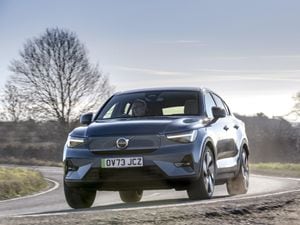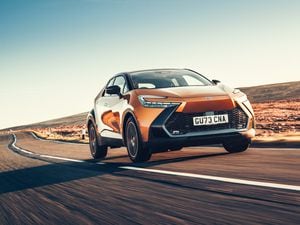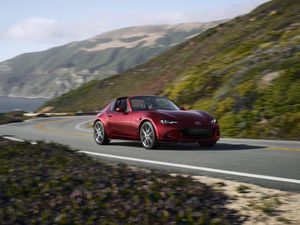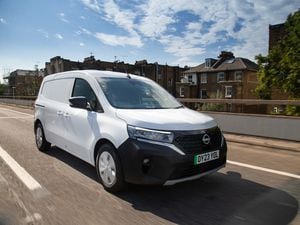First Drive: Volkswagen’s e-Crafter is an eco-friendly, yet practical workhorse
Ryan Hirons heads to Hamburg to get behind the wheel of Volkswagen’s electrified Crafter
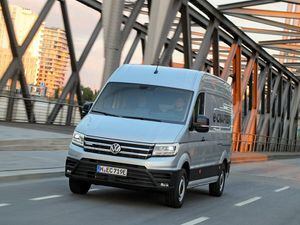
What is it?
With the world turning towards electric mobility, it’s only a matter of time before commercial vehicles become a mainstream target of electrification for a number of manufacturers — and Volkswagen is one of the first to be doing so.
This is the Volkswagen e-Crafter which — as you may have guessed by the name, following on from the trend of sticking an ‘e’ in front of electric stuff — is a battery-powered variant of the Crafter van, aimed squarely at town-based businesses.
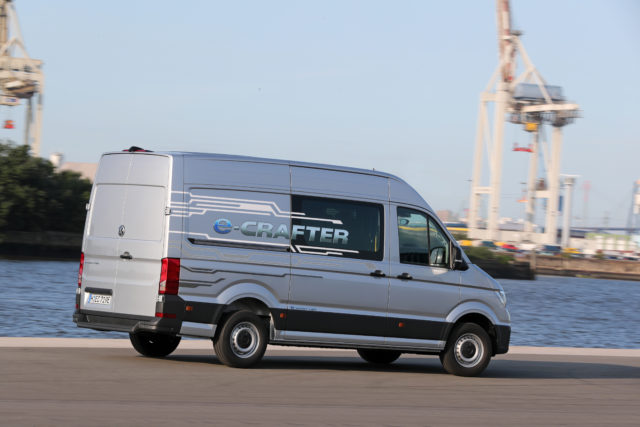
What’s new?
Although the Crafter has been around in its current guise since early 2017, Volkswagen insists the battery powertrain is not shoehorned in — rather the platform was designed with electrification in mind.
That aside, there’s little else to distinguish it from the van it’s based on. The German firm has introduced this to give city-going business users a van that works with anti-fossil fuel regulations and also reduces costs over the long term.

What’s under the bonnet?
Powering the e-Crafter is an electric motor lifted from the e-Golf, which sends power to the front wheels. The system develops 134bhp and 230Nm of torque, with the van’s top speed capped at 56mph — so don’t expect this to be much of a motorway cruiser.
As for range, Volkswagen claims 107 miles on the NEDC cycle on a full charge with the battery capable of fast-charging as standard. Of course, being electric, emissions aren’t a concern here.
As with all electric machinery, the e-Crafter delivers a fair bit of punch. Although not exactly quick, the instant and constant torque makes it potent enough for zipping around town and isn’t hampered much by a medium load of cargo in the back.
What’s it like to drive?
The e-Crafter, much like its fossil-fuel brethren, is rather car-like to drive considering it’s a huge van. Its electric steering is well-weighted, and it’s also quite a maneuverable machine.
Large, double-stacked mirrors make visibility a breeze — aided further by the standard inclusion of a reversing camera, which works wonders when navigating tight spots.
While the Crafter may be ideal for business use in town, it falls flat if you’re looking to head long distance. With a maximum top speed of 56mph and limited 107 mile claimed range, it’s hard to suggest as anything more than an inner-city workhorse. In defence of Volkswagen, it knows this, and pitches it as no more than machine for the local grind.

How does it look?
Despite being electric, the e-Crafter does well in making no huge visual fuss of its battery-powered mechanicals. It looks just like a regular Crafter, aside from a bit of badging and a lack of exhaust pipes, and that’s a good thing in this case.
The design is sharp, with Volkswagen’s corporate look heading it up, while standard LED headlights give it a pronounced look on the road.
Otherwise, it’s all very standard van — slab sides and tall dimensions – but this is of course a machine designed for functionality over form.

What’s it like inside?
Being a van, it’s all about space and ruggedness in the Volkswagen e-Crafter. It may have hard, scratchy plastics in the cabin, but they’re there for good reason — along with plenty of cubby holes and other storage spots, the interior has been designed to handle anything thrown its way. It’s also recognisably VW inside, with the family dashboard making a sharp and stylish appearance.
What about its intended purpose, though? The e-Crafter has a payload of up to 1.72 tonnes, with space for 4 wooden pallets to fit in comfortably, making it well up to the task of an inner-city machine.
Unlike its diesel stablemates though, the e-Crafter is not rated for towing — making it a hard sell to anyone looking for trailer functionality with their van.

What’s the spec like?
Creature comforts are pretty minimal for the e-Crafter — after all, it’s a workhorse, not a luxury machine — but there’s plenty of gear to improve safety and make the van a more practical and livable machine.
Standard features include ParkPilot assistance, cameras at both the front and rear of the vehicle, automatic post-collision braking (the first in its class to boast this), cruise control with lane keep assistance and cross wind assist.
There are some luxuries, as well. There’s a full-colour infotainment display complete with navigation and Bluetooth support, a heated windscreen and heated ‘comfort’ seats.
On paper, the Volkswagen e-Crafter looks set to be a well-equipped van when it arrives on UK shores — but pricing has yet to be confirmed, so we’ll have to reserve judgment on its value for money.
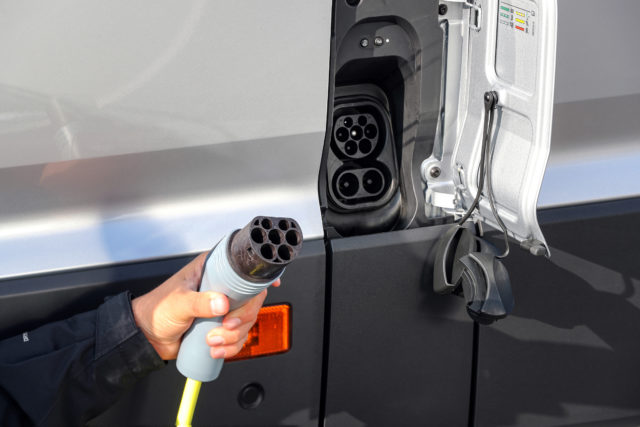
Verdict
The Volkswagen e-Crafter shows there’s a place in the current world for electric vans, as well as hope that they’ll continue to grow stronger in the future.
With great town usability and a respectable payload, it makes sense as an inner-city runabout. If you’re looking to expand beyond that though, the e-Crafter’s limited range and capped top speed make diesel options still the better choice in this case. That said, we predict the future of electric vans becoming a common sight on roads might be sooner than you’d think.


